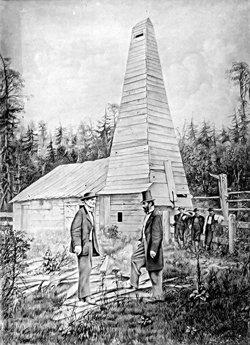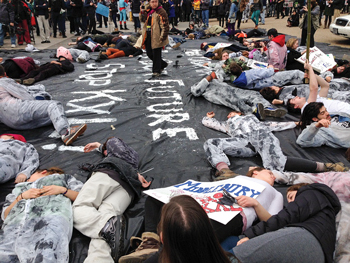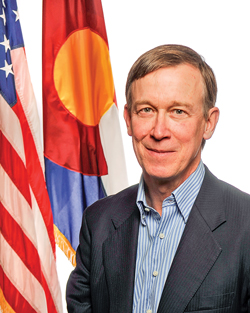|
From its beginnings in 1859, near Titusville, Pa. (Fig. 1), one of the major questions surrounding the U.S. oil and gas industry has been how it should best be regulated. Finding the appropriate level and nature of regulation for an industrial process is a key consideration in any society, and this is no different where oil and gas are concerned.
 |
| Fig. 1. Col. Edwin Drake’s first U.S. oil well in Titusville, Pa., in 1859. |
|
Indeed, arriving at not only the appropriate regulatory methods, but also identifying the proper level of government through which to implement said regulations, has been a constant source of change and controversy. Throughout most of that period, the argument about which level of government should regulate the industry was centered upon a choice between federal officials and various agencies in states where the industry operates. But, lately, things have started to shift to a more local direction.
BACKGROUND: 1859–1979
For most of the U.S. industry’s history, state governments have held regulatory primacy over its activities. An obvious exception to this general rule has applied whenever operations take place on federal lands, Indian lands, or in U.S. offshore waters. Accordingly, the federal government and various Indian nations have developed regulations that apply to such operations.
Another, more universal exception to general state regulatory primacy has come about in the last half-century, with the advent of major federal environmental statutes like the Clean Air Act (CAA), Clean Water Act (CWA), Safe Drinking Water Act (SDWA), National Environmental Policy Act (NEPA) and Endangered Species Act (ESA). These and other federal statutes have resulted in a constantly expanding, Byzantine web of regulatory requirements that consumes an ever-increasing percentage of operators’ costs.
In addition to enacting most of the major federal environmental statutes mentioned above, the 1970s also saw a rash of punitive federal statutes placed upon the domestic industry. Congress, along with Presidents Nixon, Ford and Carter, overreacted consistently to OPEC and major oil shocks that took place during those years. Fortunately, actions like oil price controls, the Natural Gas Policy Act, the Fuel Use Act and the Windfall Profit Tax have all gone the way of the Passenger Pigeon, but the damage wrought by such policy actions has lingered on for decades.
ENTER THE ACTIVISTS
With the advent of the major federal environmental statutes came the creation and growth of an “environmentalist” lobby that advocates for never-ending expansion of federal regulatory reach, Fig. 2. Advocacy groups like Food and Water Watch, the Natural Resources Defense Council, Environmental Defense Fund, Earthworks, EarthFirst!, Wild Earth Guardians, the Center for Biological Diversity and many others all have, as a major aspect of their core missions, the expansion of federal regulatory authority over fossil fuels.
 |
| Fig. 2. Anti-fracing activists stage a rally in Washington, D.C., in early 2014. |
|
Such groups have experienced good success in their advocacy of air quality, water and endangered species. Indeed, bureaucracies at the Environmental Protection Agency and other enforcers of federal environmental regulations are now largely staffed by people who formerly worked for one or more of these conflict groups.
This environmental activist community has seen similar success at the state level, especially in places like California, Massachusetts and New York, states that traditionally have been governed by liberal politics. Indeed, this activist/bureaucrat axis was able to convince California and some New England states to implement state and regional cap-and-trade plans.
But the activist community has enjoyed far less success in exerting federal and state-level limits, and/or bans, on the use of hydraulic fracturing. As the industry in recent years began to ramp up deployment of fracing, the activist community became increasingly alarmed. This is not because they view fracing as a threat to the environment, but because they see it as a limiter to what they had hoped would be a massive increase in power generation market share for wind, solar and other “renewable” energy forms.
Prior to the ongoing shale oil and gas boom, the conventional wisdom was that oil and gas were in a state of permanent decline, and that the U.S. and the world would have to move to other fuel sources to power their economies. In such a world, advocates for renewable fuels saw unending growth, via government subsidies, as their “rightful” future.
That all began changing, shortly after the turn of the 21st Century. Around 2007, some in the activist community, in cooperation with a group of sympathetic journalists, began to mount an organized campaign to demonize fracing. This campaign has become increasingly well-funded while growing more shrill in its messaging over time. Yet, it has enjoyed only limited success in convincing state and federal regulators to curb fracing.
ACTIVISTS “GO LOCAL”
Frustrated by their inability to block progress—and the ongoing boom—at the state or federal level, the activist community has turned its attention to more local levels in recent years. This tactical shift is proof-positive that the activist community’s goal is not to effectively regulate the industry’s activities, but to make news by convincing voters to enact ordinances banning fracing and other industry activities.
This becomes evident, given that no well-intentioned and knowledgeable person could honestly believe that the most efficient, effective way to regulate an industry as broadly-based as oil and gas is to do so at the city or county levels. As an example of the complexities that such regulation could create, county-level regulation in Texas would conceivably result in 253 distinct and separate regulatory regimes.
Obviously, no industry could live and grow within such an onerous regulatory model, which, of course, is one of the main reasons why the activist community has begun to move in this direction. Another reason for this tactical shift is the simple fact that obtaining tangible results can be far quicker at the local level than statewide or nationally. It is far easier and cheaper to effectively influence voters in, say, Longmont, Colo., with its population of about 86,000, to vote in favor of an ordinance to ban fracing than it would be to engage in a long, arduous effort to convince the Colorado Oil & Gas Conservation Commission to amend its regulatory structure.
The beauty of this for activists is that passing a local ordinance attracts just as much media attention as do efforts at the state and federal level. It is also just as effective for their efforts to maintain the illusion of ongoing crisis and conflict, which is so critical to their fundraising efforts.
GROUND ZERO: COLORADO
After sporadic, mostly failed efforts to enact local ordinances in various states over the prior few years, the anti-fracing community decided to focus on Colorado in 2013, where they had experienced an early success in Longmont during 2012. More specifically, they calculated that small-to-mid-sized communities in the northeastern portion of the state, where efforts to develop the prolific Niobrara shale were well underway, were especially fertile ground, and they turned out to be correct.
The region had never experienced a large-scale resource play like the Niobrara. The region had also seen a significant influx of new citizens moving in from other parts of the country in recent years, meaning that, by and large, the population there was not used to the presence of the oil and gas industry. In addition, two of the target cities, Boulder and Fort Collins, are home to Colorado University and Colorado State University, respectively, allowing activists to target large populations of voting-age college students with their anti-fracing propaganda.
In addition to those two cities, the towns of Lafayette and Broomfield also became targets for the anti-fracing community. In November 2013, all four communities approved the anti-fracing ballot measures, although the final result in Broomfield did not come about until after a mandatory recount had been completed in early December. During 2014, various Colorado state courts have, one-by-one, ruled these ordinances to be illegal under the Colorado state constitution. That inconvenient fact did not stop the activist community, working in concert with, and largely funded by, wealthy Colorado Congressman Jared Polis, from seeking another series of similar bans for inclusion on this year’s November ballot.
However, Democratic Gov. John Hickenlooper (Fig. 3) intervened in the process during the summer, and convinced cooler heads to prevail. Polis ultimately agreed to withdraw his support for the ballot initiatives and convinced his allies in the activist community to agree to participate in a task force appointed by the governor.
 |
| Fig. 3. Colorado Gov. John Hickenlooper has tried to bridge the gap between the industry and environmental opponents. |
|
As a result of this agreement, no anti-fracing ballot measures appeared on this year’s Colorado ballot. The governor’s task force held its initial meeting in late September, so it is too early to tell how successful its efforts will be, ultimately.
ON TO CALIFORNIA AND TEXAS
It was inevitable that the anti-fracing local initiatives would move to California, which has long been fertile ground for this kind of activity. Sure enough, the California counties of Santa Barbara, San Benito and Mendocino were targeted in 2014.
Ironically, no one has used fracing in Santa Barbara or Mendocino counties, but that inconvenient fact hasn’t stopped the activist community from getting its business done. To the contrary, the only apparent consequence that reality has had was to convince the activists to expand the various bans to apply to all of what they refer to as “high-intensity petroleum operations.” In their view, such operations include steam injection and acid well stimulation, in addition to fracing. Acid stimulation has been a common feature of California operations for many decades, and steam injection has been used extensively in San Benito County.
To their everlasting credit, the voters of Santa Barbara County defeated the proposed ordinance there, on Election Day. However, the proposed ordinances for both San Benito and Mendocino counties were passed, so the industry will have to work to mitigate their effects.
While the activists’ entry into California was highly predictable, a year ago few would have expected these groups to make an early run at seeking an anti-fracing ordinance in Texas. But that’s what happened early in 2014, when local activists in the city of Denton unveiled a long, detailed, proposed city ordinance that would effectively ban fracing within the city’s limits.
Working from their successful model in Boulder and Fort Collins, Colo., activists chose Denton as their first Texas target, due to its relatively low population (roughly 120,000) and its status as a “college town” with the presence of the University of North Texas, home to more than 30,000 college-age, potential voters. To push the proposal forward, organizers were first required under Texas law to collect a minimum of 596 valid signatures on a petition. On May 7, they presented 1,871 qualifying signatures to city officials.
The Denton City Council met on July 15 to consider whether to approve or reject the ban, or to place it on the November ballot. By a 5-2 vote, council members rejected the ban, but then took a unanimous vote to refer the ultimate decision to the city’s voters. Once again, the local newspaper and the city’s business community lined up in support of the industry’s opposition to this measure. But, thanks largely to a heavy turn-out of college students, the measure passed by more than 20% of the vote on Election Day.
Both the Texas Oil and Gas Association and the Texas General Land office moved quickly to challenge the Denton ban in court. Experts consider it very likely that Texas courts will rule that the Denton ban amounts to an illegal taking of private property rights under the Texas Constitution. But that likelihood has not diminished the fervor of the anti-fracing activists. In fact, activist leaders have already begun picking out their future targets in Texas.
CONCLUSION
The conclusion to be drawn from all of this activity in these three critical states—and elsewhere—is that, regardless of the outcomes of the initiatives that appeared on the November ballot, the anti-fracing activist community has made a strategic decision to focus a significant portion of its efforts locally. They see this as fertile ground, not for making permanent changes in the law, but for perpetuating conflict and enhancing their fundraising efforts.
While the law is still on the industry’s side fairly consistently, it is apparent that, at least in certain pockets of what we have historically considered to be “oil and gas country,” public opinion is slipping in the opposite direction. This is a dangerous trend that the industry must work hard to address and find ways to reverse. 
|





